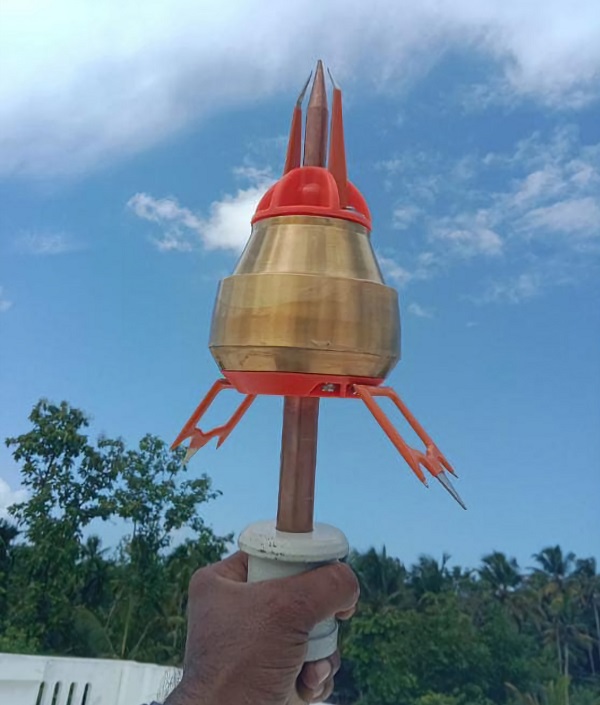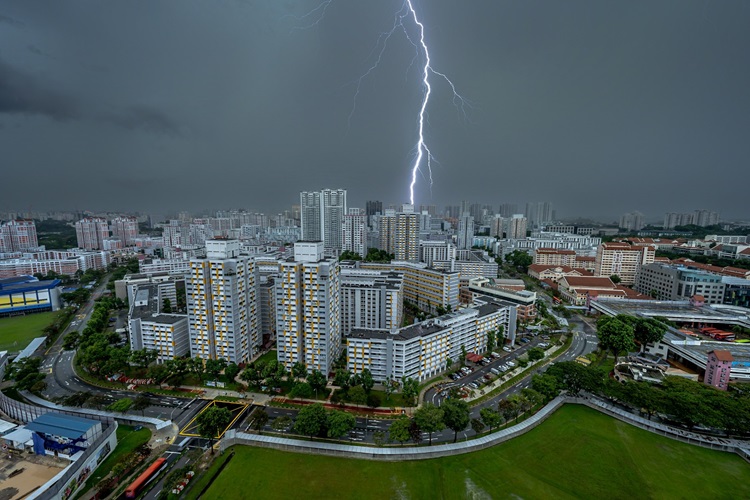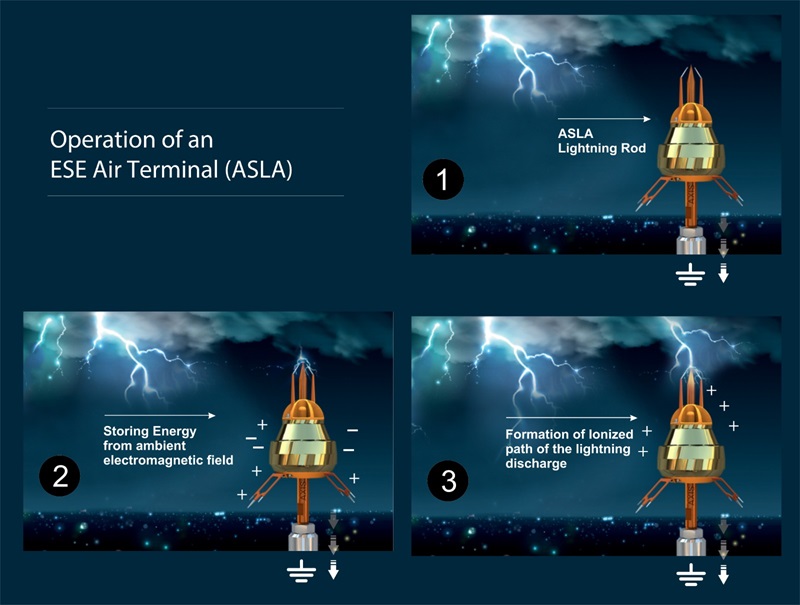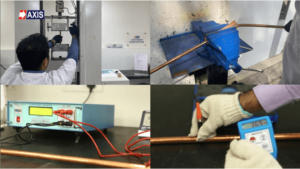Last year, lightning strikes tragically claimed 429 lives in India and thousands more globally. Many of these deaths could have been prevented with proper lightning protection. At the heart of any effective Lightning Protection System is the Lightning Arrester. Let’s understand the science behind lightning strikes, ESE Lightning Arrester Working Principle and how these devices work to protect against lightning strikes.
By the end of this blog, you will clearly understand the working principle of the ESE Lightning Arrester, how these devices protect lives and property from the powerful impact of lightning strikes.

Types of Lightning Strikes
I’m sure all of you have seen a flash of lightning. But how can it really harm you?

Lightning is the sudden discharge of electric charges built up in the clouds, neutralizing them. On an average, a lightning flash instantly releases one billion joules of energy. This amount of energy can lead to the widespread destruction of buildings, electrical systems and can result in loss of lives. The impact can be more disastrous in the case of taller buildings, as lightning tends to strike them first.
There are mainly two ways in which lightning can hit a body, they are by Direct and Indirect lightning strikes.
- A direct lightning strike is when a bolt of lightning hits a living body or an object directly, without hitting anything else first. This type of strike is fatal because all the lightning’s energy goes right into whatever it hits.
- In an Indirect lightning strike, the lightning strikes on a conducting medium like electrical wires or telephone lines near the victim, and a portion of the current jumps from the conducting medium to the victim.
Talk to our engineers!
Role of Lightning Arresters
This is where lightning arresters come into the picture. To protect your personnel, buildings, and electrical systems, these arresters are installed on top of the structures. A lightning arrester is the primary part of the Lightning Protection System. It protects by directing lightning energy to the ground through a low-resistance path.
There are mainly two types of lightning arresters in use:
We have explained the differences between these two in detail, you can watch them here.
Meaning of ESE Lightning Arrester
Also known as Early Streamer Emission Lightning Arrester, this technology offers safety from Direct Lightning Strikes. Before we dive into how it works, let’s start by understanding the meaning of Early Streamer Emission Lightning Arrester.
Early: This word means “sooner than usual”. Here, it refers to the device’s ability to react quickly during lightning.
Streamer: A streamer is a thin channel of ionized air that reaches upward from the ground (or a structure) towards a cloud. It’s like an invisible path that lightning follows.
Emission: This means “sending out” or “releasing.” Here, it refers to the device releasing electrical energy or creating an electric field.
Put together, an Early Streamer Emission Lightning Arrester creates an upward path for lightning earlier than surrounding objects, aiming to protect you from direct lightning strikes.
ESE Lightning Arrester Working Principle
The emission from this arrester is generated by storing energy from the ambient electromagnetic field at the time of the lightning events.

Let me make it simple for you, the ESE device has this tip called an air terminal. In normal conditions, this air terminal is inactive. When a charged cloud approaches, it creates a strong electric field in the area. The ESE device detects this change in the electric field, and sends high-voltage pulses from its tip. These pulses turn the air around the tip into ionized air, which conducts electricity better than normal air. This ionized air creates a path that aims to guide any lightning strike safely to the ground through the ESE device.
One crucial aspect of the ESE working mechanism is the coverage area of protection. This is the area within which, the arrester can protect you and your structure from lightning strikes. The coverage area is the part that comes under the semicircle. This semicircle is calculated with the help of this table, which is made using this formula. I have explained both the table and the formula for calculating the coverage area in detail. You can read our blog our watch the video here.
One question we often get is “How many times has lightning struck our building?” This information is critical for maintenance. To help you with the exact number, we have lightning strike counters, they track how many times your arrester has been struck by lightning. Have a look at the counter here.
I hope you now have a clear understanding of ESE Arresters. Please remember, that calculations and designs for lightning protection systems should only be carried out by a competent and authorized engineer.
Why Axis Electricals?
At Axis, we have a team of over 50 engineers ready to assist you with designing, installing, and testing your Lightning Protection Systems. Our arresters are trusted and installed in a variety of settings around the world, including substations, data centers, factories, and even everyday residential and commercial buildings.
Thank you for reading the blog, Axis is a leading manufacturer and supplier of Electrical Components to over 80+ Countries. Talk to our industry expert by visiting our Contact Us section. You can also watch our videos by our experts – click here.







